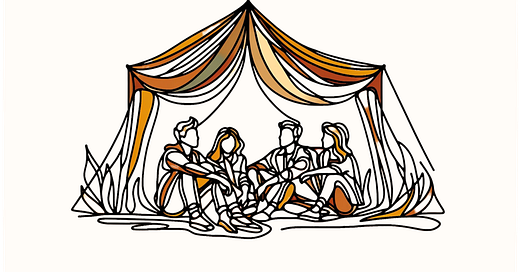Don't Build a Social Network, Build a Social Utility
Theory #21 | Not every social product should be a social network
We often think of “social products” as synonymous with “social networks,” but they’re not. Social networks are just a subset of social products, though arguably the most popular and lucrative kind that we also talk about a lot.
But I think it’s the wrong time to build a new social network. There’s something more compelling to build — something I refer to as a social utility.
Why not build social networks?
The current context is this: we’re in an era of legacy social network dominance and what feels like category saturation too.
Facebook, Instagram, TikTok, Snapchat, X (fka Twitter) are the big players. And the barrier to durable entry for any new social network seems extremely high. We see this with the plethora of new apps that launch seemingly every day yet very, very rarely find a value proposition that sticks.
Eugene Wei’s famed Status as a Service outlines three dimensions to evaluate social product strength — social capital, entertainment, and utility. The essay focuses mostly on status and how it’s valued and accrued by creators across the different kinds of social networks that have scaled.
Wei doesn’t dissect the entertainment dimension, but it’s of course a big value prop for the consumption use case. And on utility, he briefly opines:
Utility doesn't require much explanation … a social network like Facebook allows me to reach lots of people I would otherwise have a harder time tracking down, and that is useful. A messaging app like WhatsApp allows me to communicate with people all over the world without paying texting or incremental data fees, which is useful. Quora and Reddit and Discord and most every social network offer some forms of utility.
An overwhelming number of builders have launched social networks to tackle the social capital and entertainment use cases. The success cases have only amplified the allure of building networks — the opportunity for virality, tremendous scale, strong network effects, and massive financial value.
Relatively fewer people have focused on utility. Even when they do, it’s usually done more quietly. However, I think utility is a very valuable dimension that’s been underexplored by product builders and philosophers alike.
So, yes, you could try to build a new social network via one of few challenging strategies. Or instead, as this essay calls for, you could build what I call a social utility — I believe it’s an especially good time to do it. So let’s dig in …
What is a social utility?
In his piece, Come for the tool, stay for the network, Chris Dixon talks about utility as a strategy for bootstrapping networks:
The idea is to initially attract users with a single-player tool and then, over time, get them to participate in a network. The tool helps get to initial critical mass. The network creates the long term value for users, and defensibility for the company.
He cites Instagram as an example — its first feature was photo filters, a single-player tool for edit photos before sharing them elsewhere. Of course Instagram eventually became the place to share those photos, connect with friends and discover others, an evolution into the network we now know.
Dixon’s examples focus on the “single-player tool.” The tactical value is this: you only have to serve one user instead of getting a critical mass of users to join, connect, regularly use your product, and create a strong network effect. Starting single-player helps you refine a product’s value for individual users and stabilize retention on the basis of that value before introducing social or network features.
Both tools and networks offer a kind of utility to users, so I think of them as two ends of a utility spectrum. Not every network starts with a tool, and not every tool becomes a network. (Of course networks can offer tools too, but the core value prop tends to come from one side.)
Along these lines, there are single-player tools, there are social networks, and there is something in between that has aspects of both. I think of these as social tools, or social utilities.
Here’s a tactical definition:






